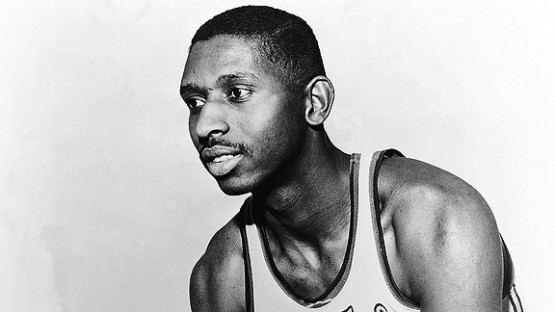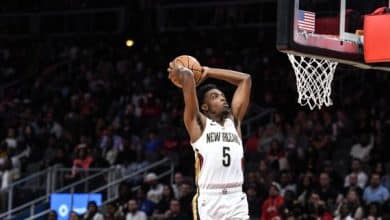
His name doesn’t necessarily mean anything to you, and yet 72 years ago, on October 31, 1950, Earl Lloyd made sports history by becoming the first black man to play in an NBA regular season game.
Like Jackie Robinson in baseball, he was a basketball pioneer who died on February 26, 2015, even though Earl Lloyd refused to be placed on the same level as number 42 of the Brooklyn Dodgers.
“In 1950, basketball was confidential, and it did not have the notoriety of baseball”he recalled. “I don’t think my situation is comparable to that of Jackie Robinson who was playing in a hostile environment, with teammates who didn’t want to be with him. In basketball, guys used to be integrated right from college. There was a different mentality. »
Pioneer by chance
It was the chance of the regular season schedule that allowed Earl Lloyd to inscribe his name in the great history of the sport. Because on April 25, 1950, during the first real NBA Draft, it was Chuck Cooper who was the first black basketball player drafted in history.
A few moments later, Earl Lloyd was the 100th choice of this Draft, selected by the Washington Capitols.
The pioneers that are Chuck Cooper and Earl Lloyd are, on the same day, April 25, 1950, accompanied by Nat Clifton. The one who was nicknamed “Sweetwater” had just spent a few years with the Harlem Globetrotters. Hired by the Knicks, he becomes the first black player to sign an NBA contract.
But the strongest date is that of the first match. This famous October 31, 1950, therefore, the meeting opposed the Washington Capitols, a team coached by Red Auerbach from 1946 to 1949, to the Rochester Royals (future Sacramento Kings). It took place in Rochester. Earl Lloyd (1m96 for 102 kg) played winger for the Capitols. The league was only four years old and obviously didn’t look like it does today.
Earl Lloyd, nicknamed “The Big Cat”, would bring down a very symbolic barrier as well as compile 6 points and 5 assists in this meeting.
“I imagine people were expecting to see Ku Klux Klan members showing up with their ropes and robes. Nothing happened. When I left college, I had to show everyone that the guys in my Conference were fit to play in the NBA, not just me. »
NBA champion in 1955
His adventure with the Capitols came to an end after seven matches. Cut in January 1951, he joined the army before being picked up by the Nationals. It was with them that he signed his best season in the league, in 1954-55 (10.2 points and 7.7 rebounds on average) and was NBA champion that same year. “The Big Cat” became, with Jim Tucker, the first black basketball player playing in an NBA champion team.
In his autobiography published in November 2009, “Moonfixer: The Basketball Journey of Earl Lloyd”, he said he had never had a conversation worthy of the name with a white man his age before arriving at the Capitols training camp. His integration into the team proceeded normally. Bill Sharman, a white rookie from Southern Carolina and future Hall of Famer, took him under his wing.
Every day he drove him to practice and then drove him home. Earl Lloyd found Horace McKinney, a native of the South, a very understanding and caring trainer. There is an anecdote on this subject: during a trip, a hotel accepted Earl Lloyd but refused him access to the restaurant. The basketball player called the “room service” to have food brought to his room. Horace McKinney refused to let him have lunch alone.
NBA’s First Black Assistant
Born on April 3, 1928, Earl Lloyd was honored by the Hall of Fame in 2003 as a pioneer in the fight against racial segregation. Leaving West Virginia State College, a college that had only black students, he spent a decade in the NBA: a few weeks in Washington, six seasons in Syracuse and two in Detroit.
After his playing career ended in Detroit, he also tried his hand at coaching, first as an assistant and he was also the first black assistant in 1968.
Three years later, he even became “head coach” of the Pistons (77 matches between 1971 and 1972). He would also work there as a scout for five years, and is said to have discovered players like Earl Monroe and Willis Reed.












